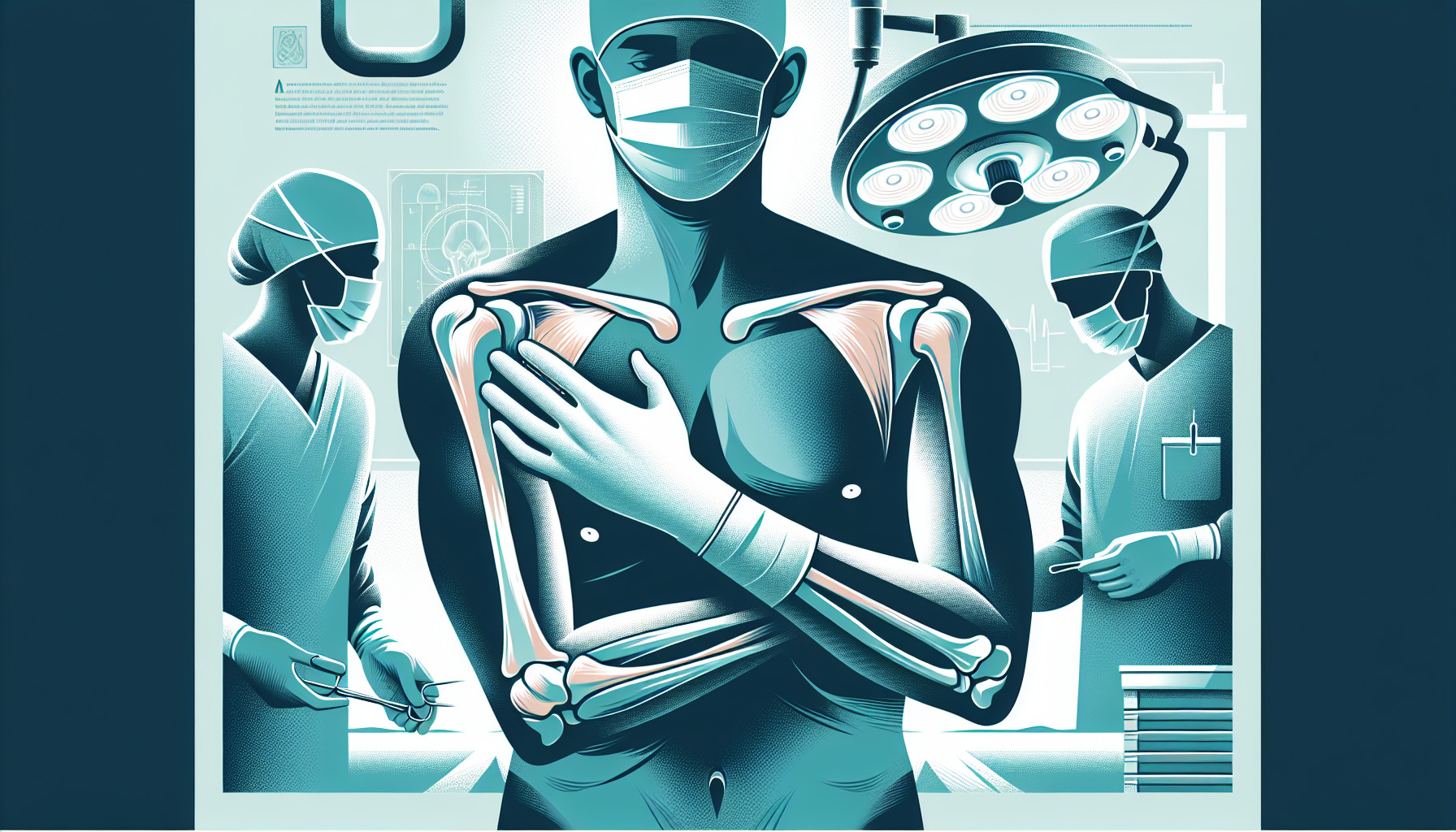Our Summary
This research paper looks at the ideal placement of implants in shoulder replacement surgeries (specifically, reverse total shoulder arthroplasty or rTSA). The focus was on the best angle for the implant in the glenoid bone (part of the shoulder blade). This was done using a simulator that mimics human shoulder motion in three dimensions, testing on eight human cadaver shoulders.
The results showed that when the implant was angled downwards (-), it reduced certain types of force (specifically superior-inferior shear force) by up to 125% compared to when it was angled upwards (+). However, when the implant was angled upwards, it increased the same force by a similar amount but also reduced another type of force (compression) by 25%.
The forces exerted by the shoulder muscles (deltoid and rotator cuff) didn’t change much based on the angle of the implant, except in one case where one part of the deltoid muscle was reduced by about 7% when the implant was angled downwards.
Compared to a natural shoulder, the neutral position (0°) of the implant resulted in reduced forces on the anterior deltoid muscle and a trend towards reduced forces on the middle deltoid. The forces on the rotator cuff varied depending on the position of the shoulder, with a trend towards increased forces at the peak elevation of the shoulder.
The researchers concluded that angling the implant downwards might reduce the likelihood of the implant loosening by reducing the amount of shear and compressive loading during arm lifting activities. However, this could be affected by individual body types and movements. This is particularly important in cases where the surgery is being done to correct a previous operation or when bone grafting is involved, as there is already a higher risk of the implant loosening.
FAQs
- What is the focus of this research paper on shoulder replacement surgeries?
- How does the angle of the implant in shoulder replacement surgeries affect the forces exerted by the shoulder muscles?
- What conclusions did the researchers reach about the ideal placement of implants in shoulder replacement surgeries?
Doctor’s Tip
A doctor might advise a patient undergoing shoulder replacement surgery to discuss with their surgeon the optimal placement of the implant, specifically considering angling it downwards to potentially reduce the risk of implant loosening during arm lifting activities. It is important for the patient to understand that individual body types and movements may affect the effectiveness of this positioning, and to follow up with their surgeon for personalized guidance and recommendations.
Suitable For
Typically, patients who are recommended for shoulder replacement surgery are those who have severe shoulder arthritis, fractures, or other shoulder conditions that have not responded to conservative treatments such as physical therapy, medications, and injections. Patients with chronic pain, limited range of motion, weakness, and difficulty performing daily activities due to their shoulder condition may benefit from shoulder replacement surgery.
In particular, patients who may be recommended for reverse total shoulder arthroplasty (rTSA) include those with rotator cuff tears, severe arthritis with rotator cuff dysfunction, failed previous shoulder surgeries, and complex fractures of the shoulder. These patients may benefit from the reverse total shoulder arthroplasty technique, which can help alleviate pain, improve range of motion, and restore function to the shoulder.
It is important for patients considering shoulder replacement surgery to consult with an orthopedic surgeon who specializes in shoulder arthroplasty to determine if they are a good candidate for the procedure. The surgeon will evaluate the patient’s medical history, shoulder condition, and overall health to determine if shoulder replacement surgery is the right treatment option for them.
Timeline
Before shoulder replacement surgery, a patient typically experiences chronic pain, stiffness, weakness, and limited range of motion in the affected shoulder. They may have tried non-surgical treatments such as physical therapy, medications, and injections without success.
After shoulder replacement surgery, the patient goes through a recovery process that includes physical therapy, pain management, and gradually increasing activity levels. It can take several months to fully recover and regain strength and function in the shoulder. The success of the surgery and the patient’s overall outcome depend on factors such as the type of implant used, the surgeon’s skill, and the patient’s commitment to rehabilitation.
What to Ask Your Doctor
Some questions a patient should ask their doctor about shoulder replacement include:
- What type of shoulder replacement surgery is recommended for my specific condition?
- What are the potential risks and complications associated with shoulder replacement surgery?
- How long is the recovery process and what can I expect in terms of pain management?
- Will physical therapy be necessary after the surgery, and if so, what will it involve?
- How long can I expect the shoulder replacement to last, and are there any factors that may affect its longevity?
- What restrictions or limitations will I have in terms of physical activity after the surgery?
- How often will follow-up appointments be needed to monitor the success of the surgery?
- Are there any specific precautions I should take to prevent complications or ensure proper healing?
- Will there be any modifications needed in my daily activities or lifestyle after the surgery?
- What are the potential benefits of angling the implant in a specific direction, and how will this impact my recovery and long-term outcomes?
Reference
Authors: Knighton TW, Chalmers PN, Sulkar HJ, Aliaj K, Tashjian RZ, Henninger HB. Journal: J Shoulder Elbow Surg. 2022 Dec;31(12):2647-2656. doi: 10.1016/j.jse.2022.06.016. Epub 2022 Aug 2. PMID: 35931329
